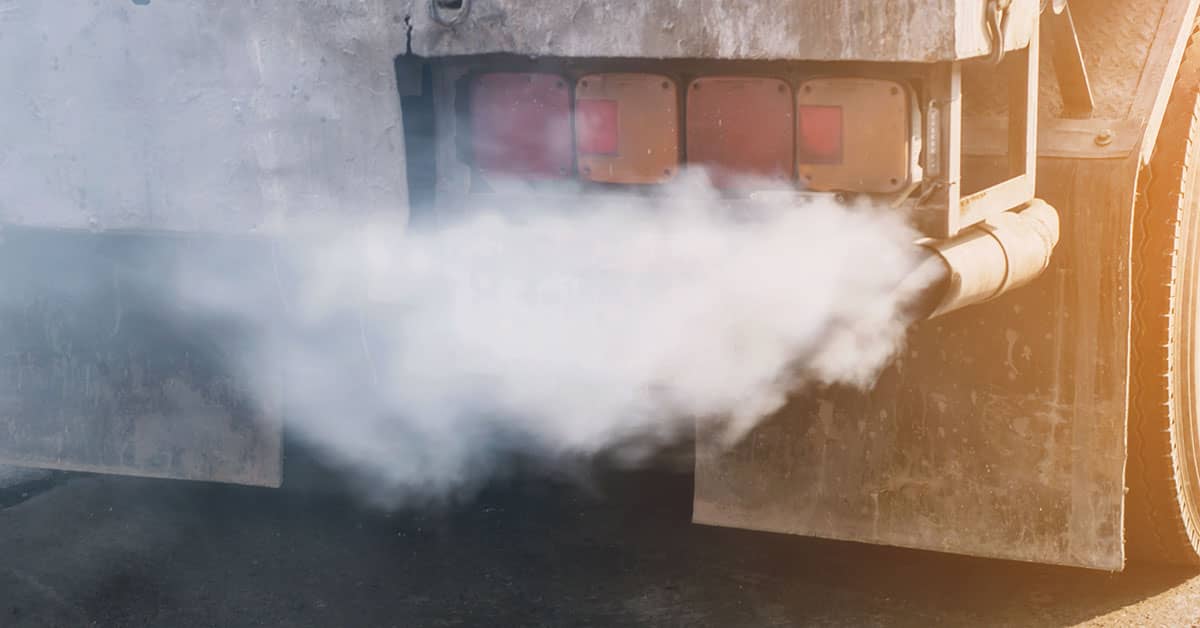Controlling carbon monoxide sources at work
Date Posted: 08/22/2022

Carbon monoxide (CO) results from the incomplete burning of material such as natural gas, gasoline, kerosene, oil, propane, coal, or wood. One of the most common CO sources in the workplace is the internal combustion engine, including vehicles, forklifts, and generators.
Carbon monoxide displaces oxygen in the blood. Large amounts can cause loss of consciousness in minutes, followed by suffocation. Symptoms of CO poisoning can vary widely from person to person, but initial symptoms may include tightness across the chest, headache, fatigue, dizziness, drowsiness, or nausea. During prolonged or high exposures, symptoms may worsen and include vomiting, confusion, and collapse.
CO poisoning can be reversed if caught in time, but acute poisoning may result in permanent damage to the heart and brain. The OSHA permissible exposure limit (PEL) for CO is 50 parts per million (ppm) averaged during an 8-hour time period.
Employees may be exposed to harmful levels of CO in boiler rooms, warehouses, and manufacturing facilities. Occupations with exposure include welders, garage mechanics, diesel engine operators, forklift operators, and taxi drivers.
Steps to prevent CO poisoning
To reduce the chances of CO poisoning, employers should take the following actions:
- Educate workers about the sources and conditions that may result in CO poisoning as well as the symptoms and control of CO exposure.
- Install ventilation systems to remove CO from work areas.
- Maintain equipment and appliances (e.g., water heaters, space heaters, cooking ranges) that can produce CO in good working order.
- Consider switching from gasoline-powered equipment to equipment powered by electricity, batteries, or compressed air if it can be used safely.
- Prohibit the use of gasoline-powered engines or tools in poorly ventilated areas.
- Provide personal CO monitors with audible alarms if potential exposure to CO exists.
- Test air regularly in areas where CO may be present, including confined spaces.
In extreme cases, respiratory protection or self-contained breathing apparatus may be required.
Employees can reduce the chances of CO poisoning by:
- Reporting any situation that might cause CO to accumulate.
- Avoiding the use of CO-producing engines, such as heaters and forklifts, while working in enclosed spaces.
- Reporting ventilation problems, especially in enclosed areas.
- Immediately reporting symptoms like dizziness, drowsiness, or nausea.
- Leaving an area if CO poisoning is suspected.
- Telling their doctor if they may have been exposed to CO.
How Safety Management Suite Can Help
Although OSHA does list a PEL for carbon monoxide, the agency doesn’t have a regulation to require training or mitigation measures. Still, employers have an obligation to address recognized hazards. Many other chemical or biological hazards my exist at work. An industrial hygiene assessment can help employers protect their workers. To learn more, watch our subscriber-exclusive webcast “Essential Safety Pro Tips for Industrial Hygiene Compliance” from August 25, 2022. Log in or register for a trial to access the webcast archives.
E-mail Newsletter
Sign up to receive the weekly EHS Insider email newsletter for safety articles, news headlines, regulatory alerts, industry events, webcasts, and more.